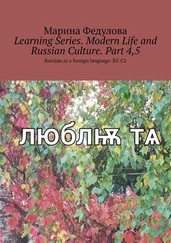Modernization was performed as a process of technical modernization, development and formation during the transit from the starting point of post-socialism to the developed capitalism of the Western European sample. In more detail, it is the following: «Circumscribed by popular stereotypes, eagerly strengthened by western and neo-liberal discourses that reflect power relations between the East and the West, people on both sides of the former Iron Curtain simply define it as a transition from the authoritarian regimes to democracy, transformation from commanded economy to free market and a rapid change of social mentalities from communist to capitalists» 50 50 Buchowski Michał: Rethinking transformation an anthropological perspective on post-socialism. Poznań 2001, p. 9—10.
.
We can find the linkage of the Europeanization issue to the post-socialist urban space in focus of cultural-anthropological perspective of researches of Vonderau 51 51 Vonderau, Asta: Leben im «neuen» Europa. Konsum, Lebensstile und Körpertechniken im Postsozialismus. Bielefeld 2010.
. I assume that a similar approach could be taken in respect to Kaliningrad. In this context, I take a view of Römhild on the Europeanisation from the «bottom», which means the understanding of cultural, social and political practices of Europeanization as a process of negotiation of different actors 52 52 Römhild, Regina: Reflexive Europäisierung. Tourismus, Migration und die Mediterranisierung Europas, in: Welz, Gisela; Lottermann, Annina; Baga, Enikö (Hrsg.): Projekte der Europäisierung. Kulturanthropologische Forschungsperspektiven. Frankfurt/Main 2009. S. 262.
.
Boundary modality
Significant attribute of the «edge» of the Kaliningrad region is boundary modality . In principle, borders are divided into the interrelated concepts of boundaries and frontiers , both of which are separating territories of different states. According to Prescott, «there is no excuse for geographers who use the terms „frontier“ and „boundary“ as synonyms» 53 53 Prescott, John: Political frontiers and boundaries. London 1987, p. 36.
. He goes on to define border as the areas adjacent to the boundary, which «fringe» it 54 54 Ibid, p. 12.
, while the borderlands refers to «the transition zone within which the boundary lies» 55 55 Ibid, p. 13—14.
.
As Prescott 56 56 Prescott, John: Political frontiers and boundaries. London 1987.
determined, boundaries are «the lines which demarcate state territory, and in most places they have superseded frontiers which were zones of varying depth which marked either the political division between two countries or the division between the settled and uninhabited areas within a country» 57 57 Donnan, Hastings; Wilson, Thomas: Borders: frontiers of identity, nation and state. Oxford 1999, p. 45.
. It may be argued that boundaries can be compared one to the other as «the symbols and reality of the physical extent of the state, as social and political facts, with form and function different in minor details but similar in most major ways», as frontiers, on the contrary, are phenomena of history 58 58 Kristof, Ladis: The nature of frontiers and boundaries. In: Kasperson, R.; Minghi, J. (ed.): The structure of political geography. Chicago 1969, p. 129.
. Frontiers cannot be isolated from their «particular historical circumstances because they are the products of historical forces which cannot be duplicated, and which in most cases are older than those entities which are framed by the modern boundaries of nation-states» 59 59 Donnan, Hastings; Wilson, Thomas: Borders: frontiers of identity, nation and state. Oxford 1999, p. 49.
.
As can be confirmed the border issues has appeared widespread by scholarly debate. On the one hand it concerns the boundaries of Europe. In this case the discussions include geographical, cultural or historical issues. First of all, they touch upon the broad question of European identity and the semantic dilemma of the term European. On the other hand the academic debate concerns the question of the European Union borders. Such diversity of areas results from the phenomena of boundaries 60 60 Szymanski, Adam: The establishment of the final borders of the EU. In: Janczak, Jaroslaw. (ed.): De-Bording, Re-Bording and Symbols on the European Boundaries. In: Wissenschaftliche Reihe des Collegium Polonicum, Band 16, 2011, p. 115.
.
Meanwhile, anthropological theories and methods enable ethnographers to focus on local communities at international borders in order to examine the material and symbolic processes of culture. This focus on everyday life and on the cultural constructions, which give meaning to the boundaries between communities and between nations, is often absent in the wider perspectives of the other social sciences 61 61 Donnan, Hastings; Wilson, Thomas (ed.): Border Identities. Nation and state at international frontiers. Cambridge 1998, p. 4.
. Still the scientific studies devoted to the issue of Kaliningrad are characterized by the limited concern on the importance of daily cultural practices, which serves only as a facultative argument for the Russian political scientists and sociologists.
Thus, I would like to contribute to a broader understanding of Europeanization , which is not comprehended as an exclusively political or historical practice, but also as a cultural practice 62 62 Römhild, Regina: Reflexive Europäisierung. Tourismus, Migration und die Mediterranisierung Europas, in: Welz, Gisela; Lottermann, Annina; Baga, Enikö (Hrsg.): Projekte der Europäisierung. Kulturanthropologische Forschungsperspektiven. Frankfurt/Main 2009, S. 262.
, then the theoretical approaches of Verdery 63 63 Verdery, Katherine: What was socialism and what comes next? Princeton 1996.
and Buchowski 64 64 Buchowski, Michał: Rethinking transformation an anthropological perspective on post-socialism. Poznań 2001.
in contexts of post-socialist Poland and Romania are applicable in the field of post-socialist Kaliningrad transition under European surrounding. As is known, the «collapse of the Soviet Union changed the geopolitical, economic and mental maps, and withdrew the elementary ordering paradigm, historical basis» 65 65 Verdery, Katherine: What was socialism and what comes next? Princeton 1996, p. 4.
in all abovementioned societies.
Nonetheless, for many «Easterners», the West continues to be a model they want to apply, in which democracy, free market, consumption and affluence prevail. But for quite a few among them the effective realization of this goal now looms as a menace over local economic interests and national, religious and cultural identity. The principle of hierarchy has come to dominate the redefinition of identities 66 66 Buchowski, Michał: Rethinking transformation an anthropological perspective on post-socialism. Poznań 2001, p. 175.
.
Regional culture of Kaliningrad enclave
In the 1990s, the studies of regional particularities were intensified in the Russian social sciences. Studies were promoted by the trend of regional sovereignty, requiring the development of a new regional cultural policy; as well as the need for understanding the specifics of regional development in the context of globalization.
The majority of Russian researchers agree: the distinctiveness of the culture of each particular region due to a variety of geographic, economic, historical and social factors, as well as the specifics of the socio-cultural experience and cultural consciousness of residents. In particular the problems of regional culture are discussed in the theoretical studies of cultural philosophy and cultural studies 67 67 Kagan, Moisey: Filosofija kultury. Sankt-Petersburg 1996.
.
Читать дальше











